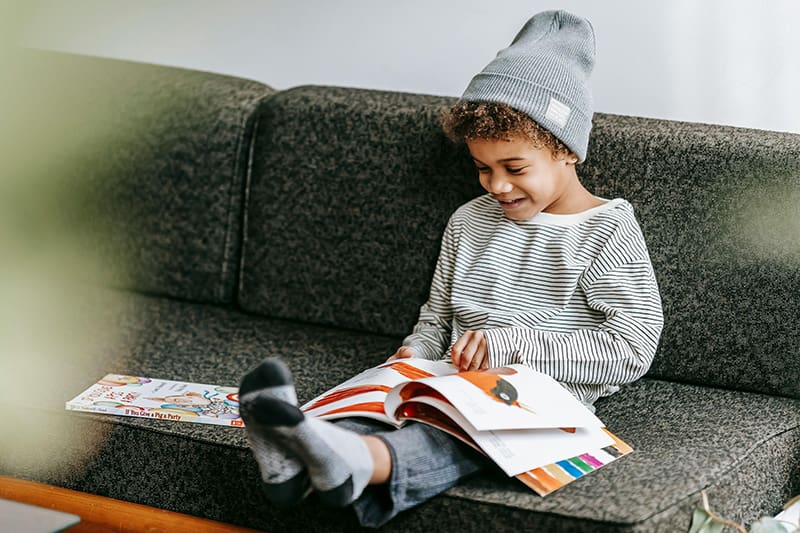The /l/ sound is made by placing the tip of your tongue on your alveolar ridge, the small bump on the roof of your mouth just behind your front teeth. The sides of the tongue do not touch other parts of your mouth, and the air travels around your tongue to produce the sound. The /l/ sound is a voiced sound, so your vocal cords vibrate as you say it.
Kids typically begin to develop the /l/ sound at around age three and master it by age six. If your child is older than six and still has difficulty pronouncing the /l/ sound or consistently replaces it with the / w/ or /y/ sound, then it is strongly recommended that you seek the help of a licensed speech therapist for your child. Due to the nature of speech problems, they are often much more easily and effectively treated if they are caught early – in fact, the earlier, the better.
Here are some fun, speech therapist-approved techniques for practicing the articulation of the /l/ sound at home with your kiddo:
- Verbal cues
To practice a single sound with your little one, begin by pronouncing the sound slowly and clearly for your child, “/l/, /l/, /l/.” This will help your child understand what to focus on and give him an example to imitate. Encourage him to repeat the sound back to you. Once he can say the /l/ sound individually, combine it with vowels to make simple syllables such as “la, la, la,” “lo, lo, lo,” and “lee, lee, lee.” Gradually, you child will be able to use the sound in words. Acclaimed blog MommySpeechTherapy.com has a great worksheet of /l/ words to use when your child reaches this level.
- Visual Cues
The /l/ sound is a liquid sound, meaning it has no innate end and could potentially continue forever, as opposed to the definitive stop of a /t/ or /k/ sound. Visual cues help demonstrate this to your child and familiarize her with continuing the sound. Before making the sound, place your right forefinger on your left shoulder. As you say the /l/ sound, slowly bring your finger down the length of your arm to the wrist. Stop saying the sound when your hand reaches your wrist. Encourage your child to do the same when she practices the sound.
- Tactile Cues
Often, kids have a little trouble identifying where to place their tongue in their mouth or simply lack the tongue muscle development to consistently get it there. A favorite trick of speech therapists to help these situations is to place a small dab of peanut butter, cream cheese, or frosting on the roof of your child’s mouth just behind their front teeth and have them taste it with the tip of their tongue. Another way is to place a cheerio in the same spot and ask your child to hold it there with the tip of their tongue for five seconds at a time. This is a delicious way to help train your little one’s tongue for producing the /l/ sound!
Singing with the /l/ sound is a fantastic activity to practice articulation with your child. Sing along to songs on the radio by replacing the real words with “la, la, la, lo, lo, lo” or make up your own songs with your little one with different /l/ syllables. Do this in the car, while making dinner, or taking a walk. Little moments of practice add up!












